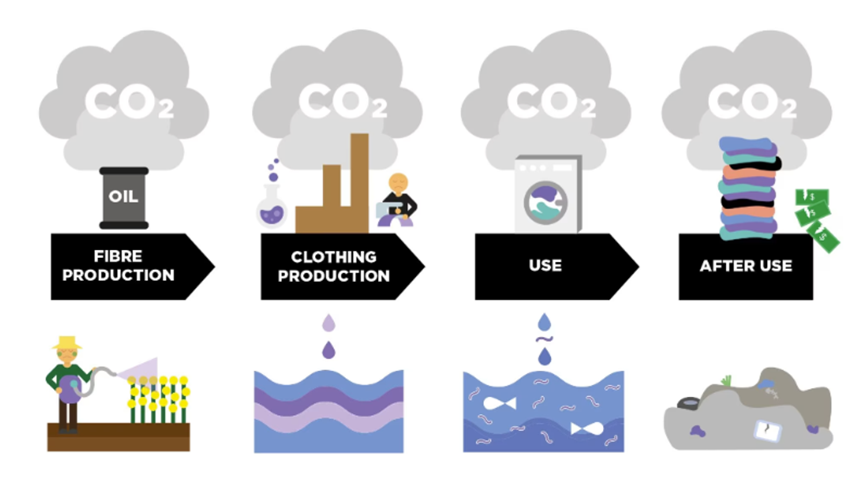According to McKinsey research, sourcing and crafting shoes from raw materials accounts for more than two-thirds of the footwear industry’s greenhouse gas (GHG) footprint. This is significant, given that the global footwear industry produces 23.8 billion pairs of shoes annually, highlighting both its scale and environmental impact. On average, each shoe is composed of more than 60 different components, including fabrics, plastics, rubber, and adhesives, all assembled to meet performance, aesthetic, and cost demands. This complexity hinders the adoption of circular practices, leaving the footwear sector lagging behind other areas of the fashion industry in circular innovation.
Consumers and the shoe industry are increasingly calling for more circular solutions as the most recent studies find that approximately 90% of footwear ends up in landfills, contributing to an increasing amount of waste. While in other areas of fashion, innovation has been more readily integrated for sustainability, footwear’s multi-material construction and complex design complicate efforts to sort, disassemble, or recycle effectively.

To address the challenges, a new initiative by the nonprofit Fashion for Good has gathered 14 shoe brands and retailers to tackle waste, improve circular design and materials, and establish systems for repair, reuse, and recycling. The consortium includes Adidas, Dr. Martens, Inditex, Lululemon, Otto Group, Puma, Reformation, Target, Tommy Hilfiger, Vivobarefoot and Zalando among the members striving to lighten the footprint of an industry in which nine in 10 of its products go to waste.
Circular Fashion
Circular fashion aims to create a closed-loop system to reduce waste and maximize the lifespan of clothing and textiles aligning with the principles of the Circular Economy by rethinking how garments are designed, produced, used, and disposed of. Embracing this approach facilitates reuse and recycling, reducing waste, pollution, and reliance on new raw materials for the fashion industry. This shift offers a transformative solution to the fashion industry’s challenges like climate change, pollution, and waste, while fostering responsible growth, offering opportunities for innovative business models and fostering a more environmentally conscious consumer culture. Key aspects include:
- Design for longevity and durability: Products are designed to be durable, timeless, and high quality which encourages longer lifespans and reduces the need for frequent replacements.
- Materials and production methods: Products are made using sustainable and eco-friendly materials, incorporating recycled or upcycled fabrics, and employing production methods that minimize waste and environmental impact.
- Extended use and reuse: Circular fashion encourages clothing rental, resale markets (such as second-hand stores or online platforms), and clothing swaps to extend the life of garments beyond a single owner’s use.
- Repair, remake, and recycling: Circular fashion promotes repair services, encourages consumers to mend or alter garments, and facilitates recycling or upcycling of old clothes into new products.
- Closing the loop: Systems are developed where garments can be fully recycled or biodegrade at the end of their lifecycle in order to minimize landfill waste and allow materials to be reused in new clothing or other products.
Key Trends and Initiatives
California’s Responsible Textile Recovery Act (Senate Bill 707) is the first of its kind in the US, and represents a significant step towards a more sustainable and circular fashion industry. It mandates that fashion brands take responsibility for the end-of-life of their products including establishing systems for textile recycling and reuse. Federal initiatives, such as the proposed FABRIC Act and the Americas Act, are also aiming to revitalize domestic garment manufacturing and promote circular practices through incentives and regulations. The proposed FABRIC Act focuses on improving US garment worker rights and boosting domestic manufacturing through fair labor standards and incentives, while the Americas Act aims to enhance US textile circularity and reduce reliance on foreign manufacturing, primarily from China, by providing financial incentives for recycling and reuse.
Unfortunately, the fashion industry faces challenges in implementing circularity which includes the complexity of textile blends that makes recycling difficult, the lack of infrastructure for textile collection and sorting, the need for greater consumer awareness and participation, and finally, the overall need for greater investment in circular textile technologies. Finally, the US fashion industry is undergoing a shift toward a more circular model, driven by a combination of legislative pressure, brand initiatives, technological advancements, and consumer demand.
Case Studies
Doc Martens, a leading British footwear and clothing brand, has launched a Genix Nappa collection, which is made from reclaimed leather from Gen Phoenix, the first company to sustainably recycle leather at scale. The company aims to tackle waste by rescuing leather offcuts that would otherwise be destined for landfill using them to create a soft yet durable new material. To create the Genix Nappa material, Doc Martens worked with Gen Phoenix to leverage the company’s innovative technology, which breaks waste leather down to the fiber level using recycled water to rebuild it into a premium and durable recycled material.
In April 2024, Lululemon, a leading Canadian multinational athletic apparel retailer, introduced the limited-edition Packable Anorak, which was its first product made with enzymatically recycled polyester. This marks a significant milestone in textile-to-textile recycling and Lululemon’s circular ecosystem goals, stemming from a multi-year collaboration with Australian enviro-tech startup Samsara Eco. The jacket utilizes polyester created through a combination of bioprocessing technologies, including enzyme-based recycling from Samsara Eco and captured carbon emissions converted by LanzaTech. This innovative material offers the same high-performance feel and quality that Lululemon customers have come to expect. Samsara Eco’s technology employs patented enzymes to break down complex synthetic blends, while LanzaTech captures and converts industrial carbon emissions into polyester building blocks. The Packable Anorak encompasses Lululemon’s end-to-end circularity vision, utilizing diverse inputs such as mixed plastic waste, end-of-life Lululemon apparel, and converted carbon emissions.
Conclusion
Circularity offers the fashion industry a vital pathway to sustainability and resilience. By embracing closed-loop systems, companies can significantly reduce their environmental footprint, minimizing waste and reliance on raw materials not only mitigates climate impact, but will also foster innovation, thereby creating new business models and driving consumer demand for eco-conscious products. If your company is interested in exploring innovative ways to incorporate circularity and efficiency into your products and operations, please contact Canopy Edge for an initial consultation to get started.


